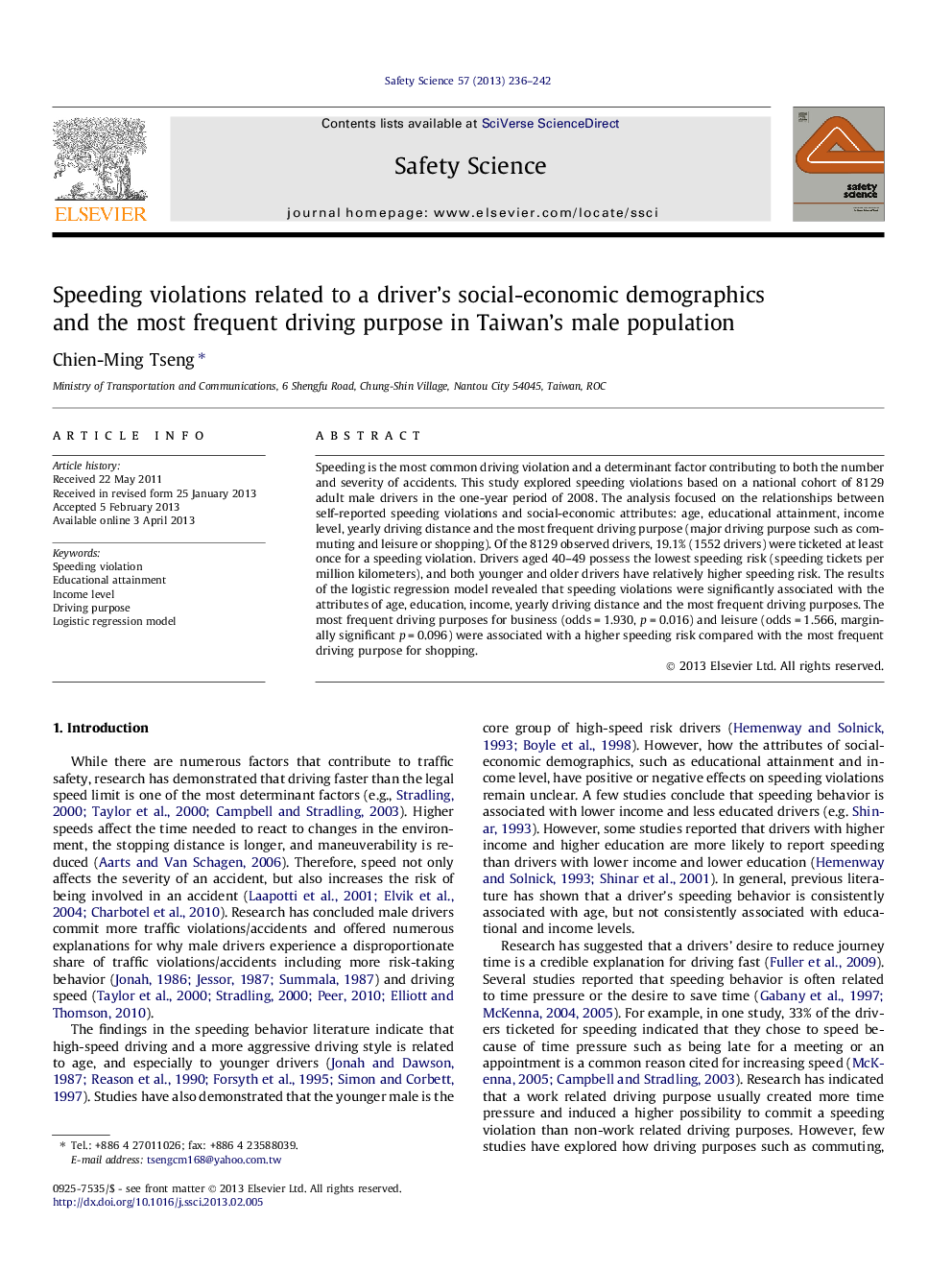| کد مقاله | کد نشریه | سال انتشار | مقاله انگلیسی | نسخه تمام متن |
|---|---|---|---|---|
| 589554 | 1453413 | 2013 | 7 صفحه PDF | دانلود رایگان |

Speeding is the most common driving violation and a determinant factor contributing to both the number and severity of accidents. This study explored speeding violations based on a national cohort of 8129 adult male drivers in the one-year period of 2008. The analysis focused on the relationships between self-reported speeding violations and social-economic attributes: age, educational attainment, income level, yearly driving distance and the most frequent driving purpose (major driving purpose such as commuting and leisure or shopping). Of the 8129 observed drivers, 19.1% (1552 drivers) were ticketed at least once for a speeding violation. Drivers aged 40–49 possess the lowest speeding risk (speeding tickets per million kilometers), and both younger and older drivers have relatively higher speeding risk. The results of the logistic regression model revealed that speeding violations were significantly associated with the attributes of age, education, income, yearly driving distance and the most frequent driving purposes. The most frequent driving purposes for business (odds = 1.930, p = 0.016) and leisure (odds = 1.566, marginally significant p = 0.096) were associated with a higher speeding risk compared with the most frequent driving purpose for shopping.
• Speeding is the most common violation and a determinant factor contributing to both the number and severity of accidents.
• Of the 8129 observed drivers, a considerable numbers (19.1%) were ticketed at least once for a speeding fine.
• Speeding violations were associated with age, education, income, distance driven and the most frequent driving purpose.
• Driving for business and leisure were associated with higher speeding risk compared with driving for shopping.
Journal: Safety Science - Volume 57, August 2013, Pages 236–242